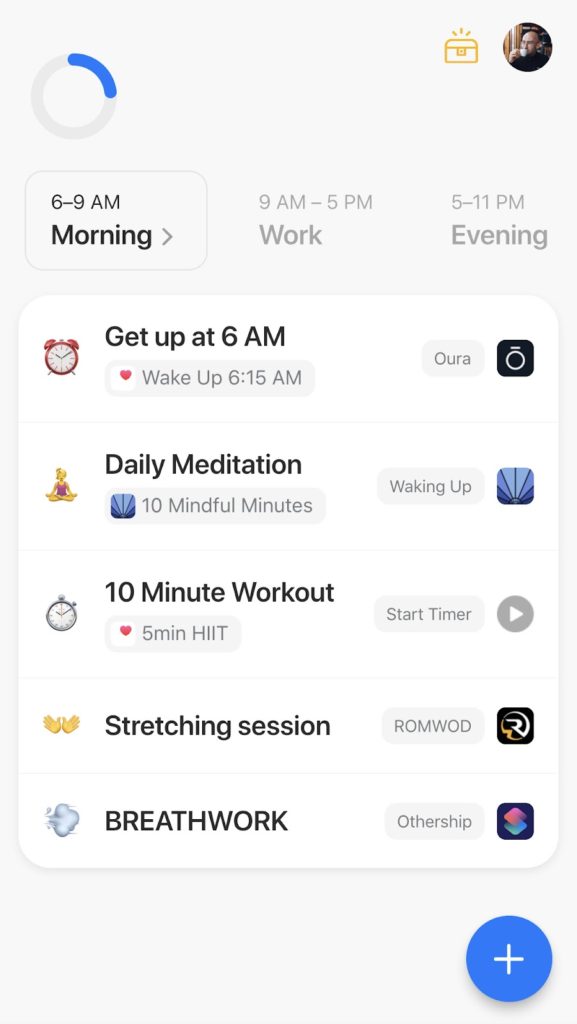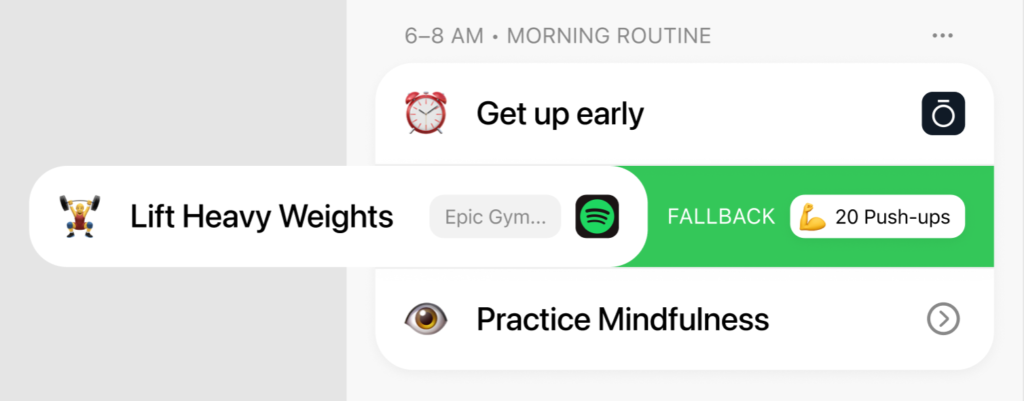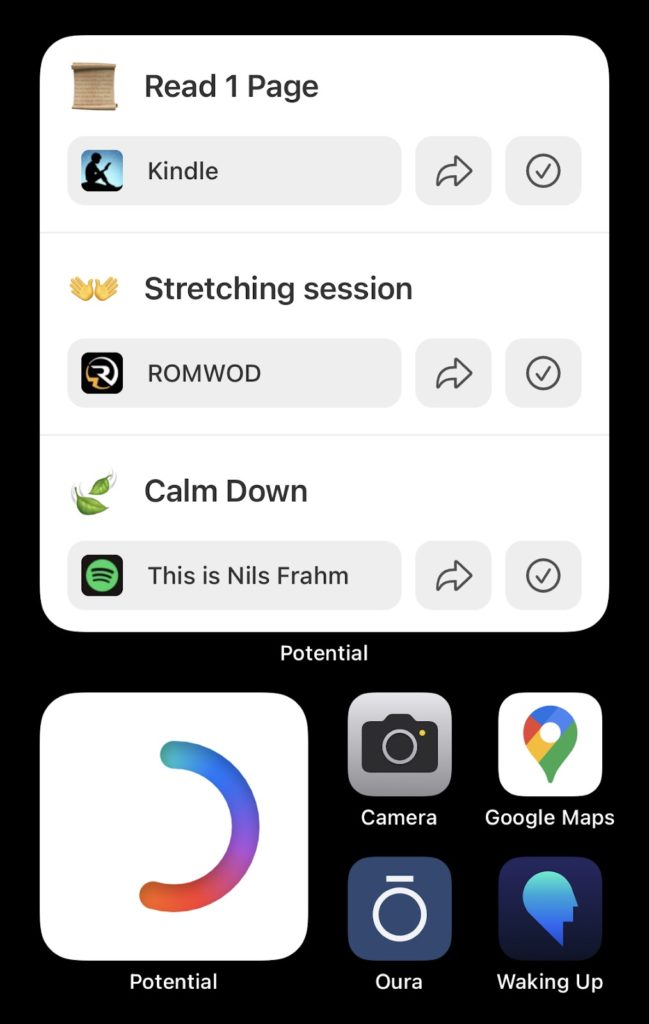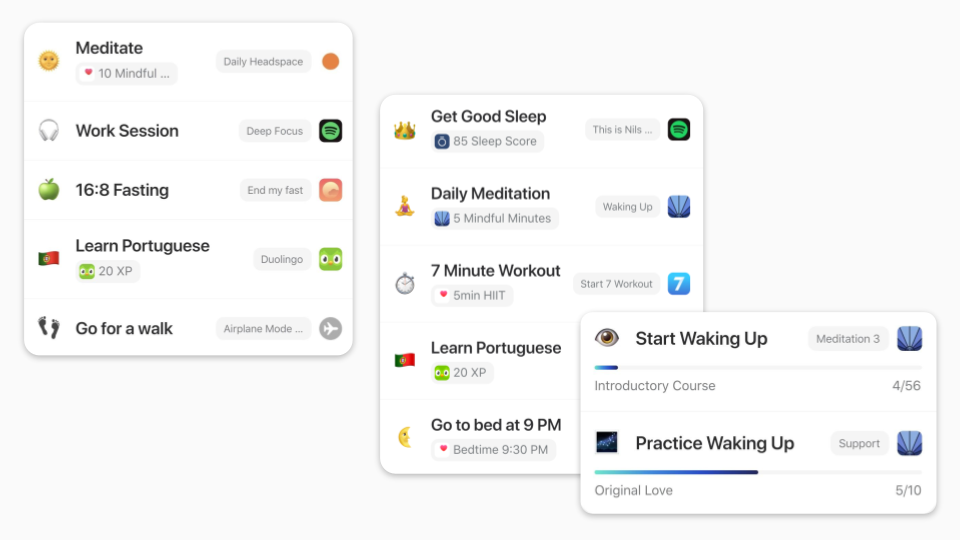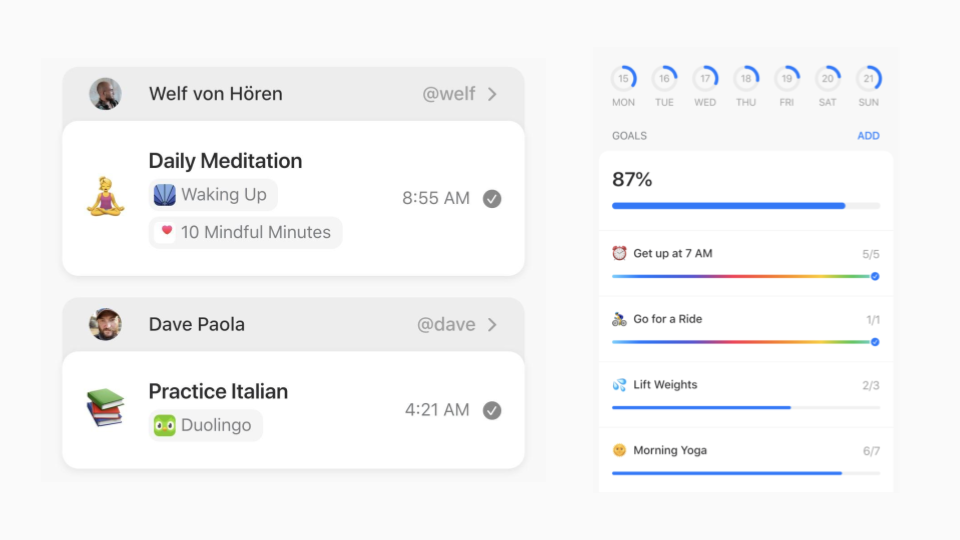Welcome to this edition of our Tools for Thought series, where we interview founders on a mission to help us achieve more without sacrificing our mental health. Welf von Hören is the founder of Potential, an app that helps users reclaim their attention by giving them back agency over what they do, how they feel, and who they become.
In this interview, we talked about the misused power of persuasive technology, the impact of the attention economy on our well-being and productivity, how to turn intentions into habits, how to implement fallback strategies, and much more. Enjoy the read!
Hi Welf, thank you so much for agreeing to this interview. Let’s start with a big question. What does it mean to you to live intentionally?
It means choosing and acting consciously, rather than being driven by mindlessness and compulsion. It means knowing the long-term consequences of my actions. It means living a life that you can look back on without regret.
It means living in a way that is true to my values, my aspirations and my purpose. It’s a quest for wisdom, meaning, and fulfillment. It’s striving to live up to my potential, to live to the best of my ability. To deepen my idea of who and what I truly am and could be. To take a good look at the world at this moment in history and do what I feel called to contribute.
Practically it means figuring out how to integrate those aspirations with the reality of our monkey minds in the context of endless entertainment and cheap dopamine. In that sense, living intentionally means figuring out how we can systematically become more capable of living up to our higher intentions.
Technology often seems to get in the way of intentional living. What inspired you to build Potential?
A few years ago, it occurred to me that everything I want out of life is on the other side of overcoming the intention-action gap. Some people struggle with this more than others. For me it was the existential struggle. Why am I not doing the things that I want to do, that I know are good for me? What can I do to change that?
That’s what led me down the rabbit hole of personal development, behavioral psychology, and eventually persuasive tech. I learned that technology can be designed to change human behavior. There I was, struggling to wake up early, meditate, read, go to the gym. And then I realized that there’s a trillion dollar industry using the power of persuasive design to make us scroll more, watch more, click more. That seemed like an incredible mismatch.
Fast forward five years and we have persuasive technology pointed at more than three billion minds, optimizing for advertising revenue and addiction. It undermines human dignity and freedom at the most basic level: the agency to direct our attention towards what’s important to us. At this scale and pervasiveness, it damages our well-being and productivity, and it debases our shared capacity for solving the world’s hardest problems.
It’s sick. It’s disrespectful of the human spirit. And I believe there’s a good chance that future generations will literally judge this as crimes against humanity.
The question is, what do we do about that? If we have digital environments that inevitably condition the minds and behaviors of billions of people, what’s an ethical way of relating to this reality? How can we make technology that’s a worthy steward of our attention?
With Potential, we are exploring what I call “Augmented Intentionality” — technology that supports our capacity to do the things we truly want to do. Interfaces that allow us to choose consciously, from our own menus, based on our values and priorities. Instead of countless random distractions, a few meaningful real-world choices, made as easy and joyful as possible.
And how does it work exactly?
Potential is centered around your intentions. It has elements of a daily planner and a habit tracker, and it is supercharged with integrations. It doesn’t just keep you accountable, it actually makes your desired behaviors 1-tap easy.
You can add your intentions and either group them together in schedules (e.g. Morning, Deep Work, or Wind Down) or just add them independently. You can tap them to open integrations, and swipe to complete or skip.
The idea here is not to make an overwhelming todo list of “25 things I need to do every day”, but instead make your own menu with the kinds of things you might want to choose from.
There’s what we call ‘fallback’ intentions that enable you to add tiny versions of a habit as a fallback. If you have the intention of lifting weights, you might add 20 push-ups as a fallback intention. That way, instead of skipping it, you replace the intention with the tiny fallback.
With our widgets, you’ll see the menu of intentions for the current time on your home screen, and you can tap the integration to jump right into your desired behavior.
Can you give us some examples of integrations and how they can fit in a user’s life?
Integrations are a really big part of Potential. You can add them to your intentions to open apps and links or run shortcuts. Shortcuts are great for jumping right into your daily meditation, recording a new activity with Strava, putting your phone into airplane mode, and so much more.
And then there are our auto-complete integrations. You can connect Apple Health, Oura, and Duolingo, to set conditions for automatically completing your intentions.
We recently also shipped Waking Up courses, enabling you to jump into the next session of any Waking Up series. There’s a lot more custom integrations coming up ?
That sounds amazing! Can you tell us a bit more about the accountability aspect of Potential?
The history of your completions gets aggregated on the Insights screen, where you can see a weekly and monthly overview of your activity.
On the social side, we currently have a very simple activity sharing: you can share completed intentions with friends. We believe social accountability can help many people stick to their intentions. We are exploring a lot of possibilities in this direction, and you can expect features like groups, commitments, and public profiles to be shipped over the coming months.
At the end of the day however, the question of single-player or multiplayer is one of personal preference. With our upcoming Attention Settings features, you’ll also be able to hide all social features.
What kind of people use Potential?
Many of them are engineers, designers, psychologists, or entrepreneurs. They all want to live intentionally and better manage their attention. They are highly aware of the role their digital environment plays in that project… They use meditation, fitness, and productivity apps.
Many have built their own systems and workarounds: elaborate habit tracking sheets, using grayscale, iOS Shortcuts, Notion and Roam templates, distraction blockers. There’s probably few better places to nerd out about intentionality-related software than our Discord community!
What about you… How do you personally use Potential?
I love a good morning routine. I always adapt it to my day-to-day moods and available time: waking up early, and then some combination of exercise, yoga or stretching, breathwork, meditation, and sometimes journaling.
I have a work schedule with intentions that are relevant throughout the day, like deep work sessions or a meditation timer, and an evening schedule with options for winding down.
I get a lot of value from fallback intentions. Sometimes I don’t feel like doing a workout, but I’m happy to do 25 push-ups instead. Or I don’t have the time for a full yoga session, but squeeze in 5 minutes of stretching. Keeps the habit alive and is a vote for the person I want to be.
James Clear would be happy to read this! What kind of results have users seen so far?
We have only launched the beta 6 weeks ago, so we are still waiting for those newsworthy testimonials, like someone doing an ironman or having a thousand day streak on meditation. Our early customer shared that it helps them actually act on their intentions and some have reported that they’ve seen a significant change in their behavior.
Potential is a premium app. Can you tell us a bit more about your business model?
The attention economy is driven by a business model that misaligns the company’s incentives with the user’s best interest: Advertising. We don’t like it.
At Potential, you’re the customer, never the product. We’re on a mission to make technology that is deeply aligned with your best interest. We take that seriously. And the only way to do this sustainably is if we’re funded by the very people we’re serving.
There’s still so much work to do if we want to take back control of our attention. Where would you like Potential to be in the next few years?
We want to make Potential into the best digital tool for intentionality that we can imagine. Over the course of this year, Potential will become much better at what it’s already doing. From a super smooth UX for setting intentions and scheduling your day, to a social layer and powerful integrations across multiple platforms — we are really excited for what’s ahead.
Beyond that, there are more questions than answers… What would it take to build the inverse function to the attention economy? Can we repurpose this stack of technologies that are currently exploiting our psychology, to support and advance our well-being and development instead? Can we make technology that helps us understand what our actual needs are, and what we can do to meet them effectively?
Can we have a world-class AI coach that asks us all the right questions on our path to wisdom and fulfillment? Can we build a brand that makes our collective self-actualization more attractive than the hell of eternal dopamine that the metaverse inevitably will become?
And while these questions guide our work, we’re aware that this is a project much bigger than any one product or company. We’ll continue to dedicate our marketing resources to attention activism, demonstrating how digital products could give their users more transparency and control over how they’re being manipulated.
Building on the iOS 15, Humane concept we published last year, our upcoming “Attention Settings” campaign will showcase strategic actions for policy makers and app store providers to increase user agency by making persuasive design techniques transparent and optional.
Thank you so much for your time, Welf! Where can people learn more about Potential and give it a try?
You can learn more at potential.app, and you can download Potential for iOS and Android. Use the code NESSLABS to get in after signing up. Find us on Twitter at @potential_app and @welfvh. We are also hiring for Engineering and Growth roles, learn more here.

